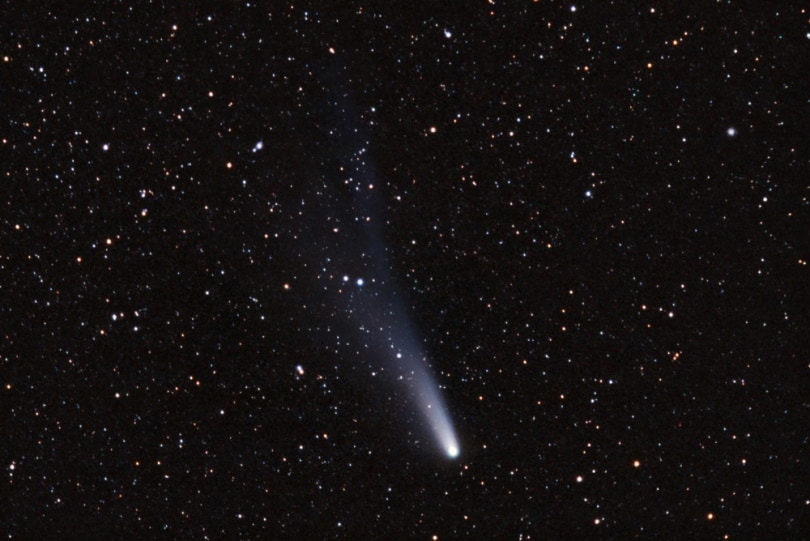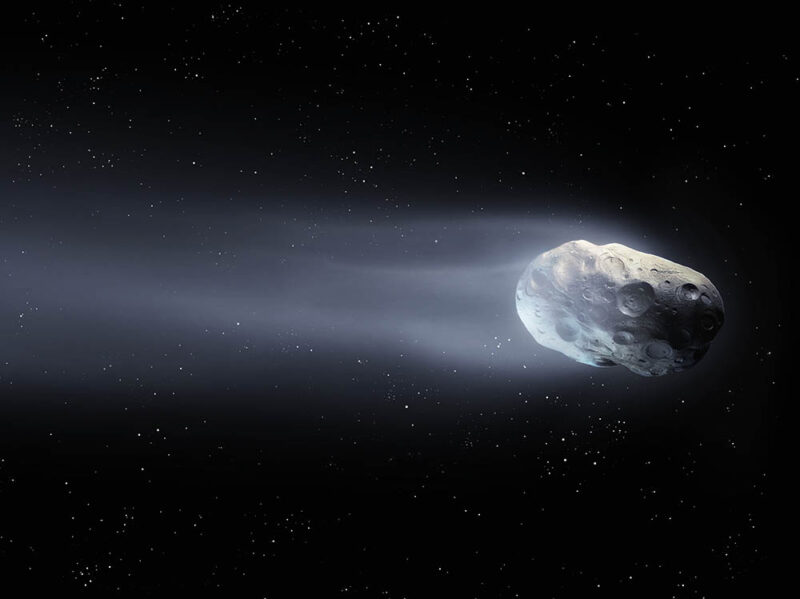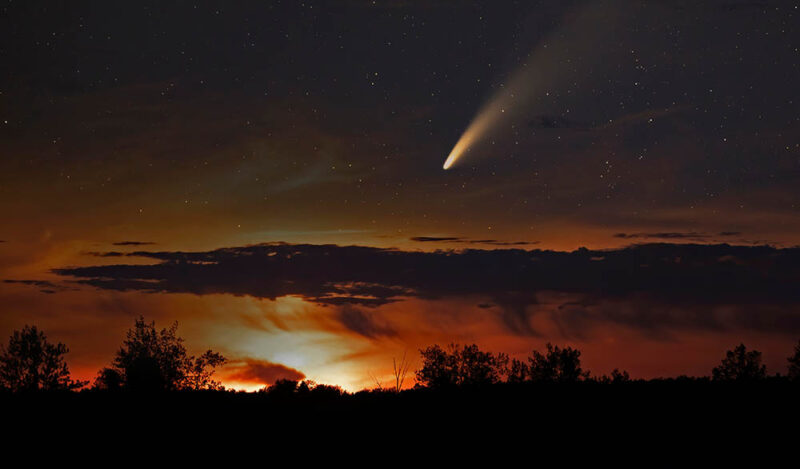Where Do Comets Come From? What You Need To Know!
Last Updated on

If you love looking at the stars in the sky, you’d probably also love to see a comet flying through the sky on a starry night. A comet will appear as a large, shiny structure that leaves a stunning glimmery tail behind it.
What makes comets so unique is that they only occur only once every few years, so there are not a lot of chances when you can catch a glimpse of them. Many people who love occurrences such as comets tend to think about where they come from and how they form.
If you are someone who is fascinated with comets and would like to know more about how they come to life, check out the rest of our article, as we will dig deep into their creation.

What are comets?
Comets are remnants of organic materials, frozen gases, water ice, dust, and rocks, which have been smashed together since the solar system’s formation 4.5 billion years ago. Although comets are typically invisible from the earth, every now and then, they get closer to the sun, and when they do, solar radiation softens the surface. The vaporization of dust and gas creates the shiny tail that makes comets so special.
When comets fly through the sky, their tail is influenced by solar wind and will consistently point away from the sun, so sometimes, instead of the tail behind the comet, it can also travel right next to it.
Another thing that makes comets so attractive is their “head,” which also vaporizes the ice and gases, so it gets a foggy glow around it, spreading it for thousands of miles.

The history of comets
People throughout history have observed comets, but before the modern era, instead of astronomical phenomena, people looked at comets with a dose of fear and considered them bad omens.
Edmond Halley was the first man ever to predict a comet’s return; therefore, one of the most famous comets nowadays got the name Halley’s Comet. Various astronomers study comets every day, so it’s possible that we will get even more scientifically proven facts and details about their exact origin and formation.
How do amateur astronomers discover a comet?
When comets pass through the sky, we typically distinguish them on their hazy appearance, composition, and elongated orbits. Most amateur astronomers use computers and telescopes that they connect together and run automated sequences to image sky parts.
If there are moving objects or comets in the image, they will move between the pictures. You can also find software that helps amateur astronomers verify if the objects moving are real or not, which after you can determine if it’s an actual comet.

Where do they come from?
Although there is uncertainty in the actual origin of comets, according to various theories, depending on their orbit type, comets can come from different places. Typically, short-period comets come from the Kuiper Belt, a region between the orbits of Pluto and Neptune.
On the other hand, long-period comets come from the Oort cloud, a sphere between the sun and the next closest star—Proxima Centauri. However, it’s tough to claim that all long-period comets come from the Oort cloud since scientists cannot observe the area, and therefore there’s not enough evidence to prove that theory.
Different types of comets
Generally, there are two different types of comets:
- Short-period comets
- Long-period comets
Depending on the frequency of the comet returning to the orbit where Earth goes around the sun, it will belong to one of these two groups.
Short-period comets
Short-period comets can return to our orbit in 200 years or even less, typically coming from the Kuiper Belt.
Long-period comets
The majority of long-period orbits come from the Oort cloud that extends over 75,000 astronomical units from the sun and consists of millions of comets inside. Depending on the comet’s approach, some reach the sun and get drawn inside the orbit, so they keep returning, while some simply depart into space and disappear. Some comets take over 200 years to return, and some of them might not return at all.

Comet connection to meteor showers
Many people don’t know this, but comets are directly connected to meteor showers, and we will explain how that happens. Certain comets can cross the orbit where the earth goes around the sun, leaving a trail of dust behind. The earth then traverses the dust trail and the particles that access our atmosphere.
Then, they start glowing since they become heated during the fall and make streaks of light across the sky while approaching our planet. When this happens with a large number of particles coming from a comet approaching earth, we experience meteor showers.
Some of the most famous comets
Certain comets are incredibly famous either due to their beauty or frequent occurrences. Below is a list of some of the most famous comets worldwide.
- Halley Comet
- Heller Comet
- Sarabat Comet
- Great Comet
- Donati Comet
- De Cheseaux Comet
- Tebbutt Comet
- Great S. Comet

Summing Up
Comets are stunning phenomena, so if you get a chance to see a comet, relax and enjoy the view as it might not happen again for hundreds of years. If you notice one, it’s likely coming from the Kuiper Belt or the Oort cloud. You can research to check if it’s one of the famous comets or if you’ve discovered a new kind. If you get that lucky, you might even have it to get named after you!
Featured Image Credit: Brian Donovan, Shutterstock
About the Author Visnja Radosavljevic
Visnja is a creative, adaptable content writer that covers various topics such as DIY, pets, home improvement, travel, gardening, and more. As a young mom and a college student, she didn’t have enough time to balance her personal and work life, so after multiple years of working a regular 9 to 5 job, she decided to pursue her passion and make a living out of it. She has been writing for a couple of years now, helping people to find valuable and interesting information online.
Related Articles:
Can You Use Binoculars to Look At Stars? How to Choose the Right Pair
15 Crucial Facts About Ultraviolet Rays & the Sun
What Constellation Is Spica In? The Interesting Answer!
10 Interesting Leo Constellation Facts, Myths, and FAQs
15 Interesting Pegasus Constellation Facts, Myths, and FAQs
6 Interesting Sagittarius Constellation Facts, Myths, and FAQs in 2024!
What Are Constellations? Where Did They Come From?
8 Interesting Libra Constellation Facts, Myths, and FAQs
